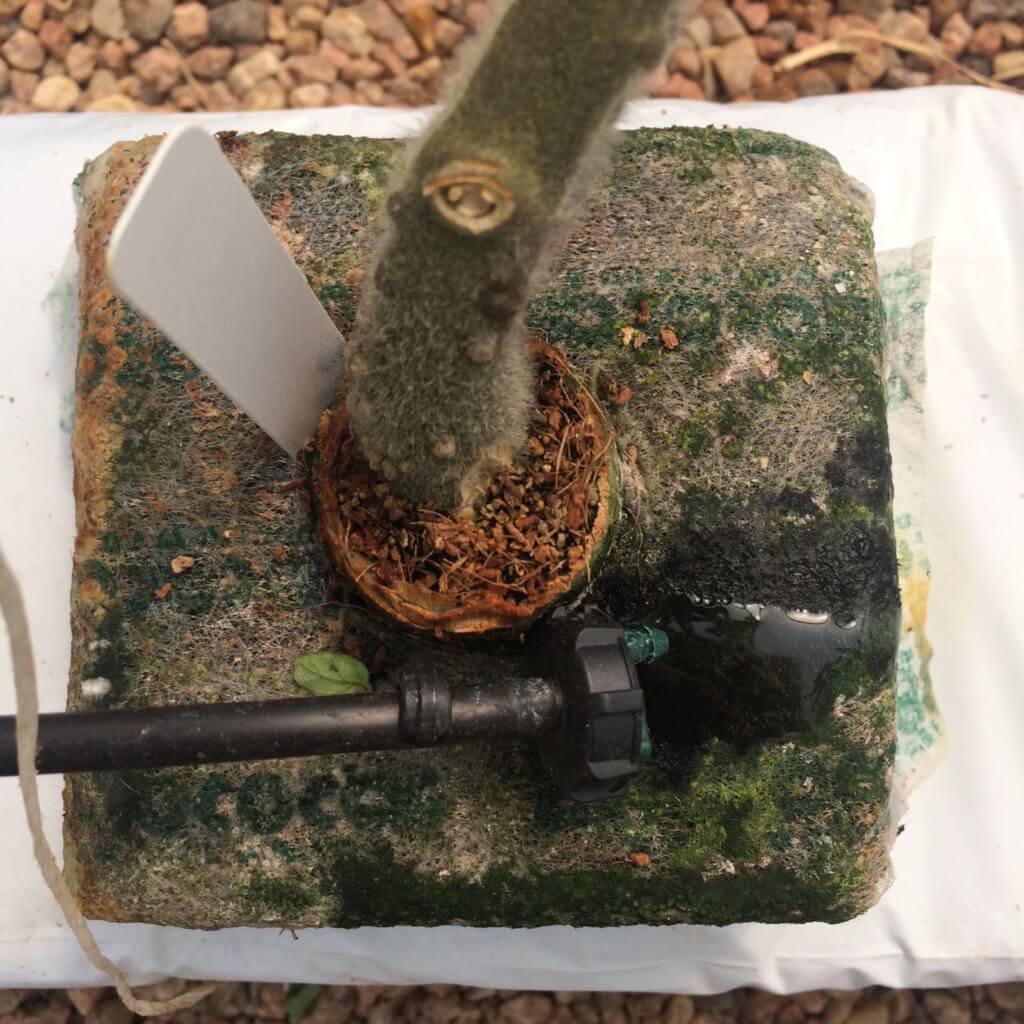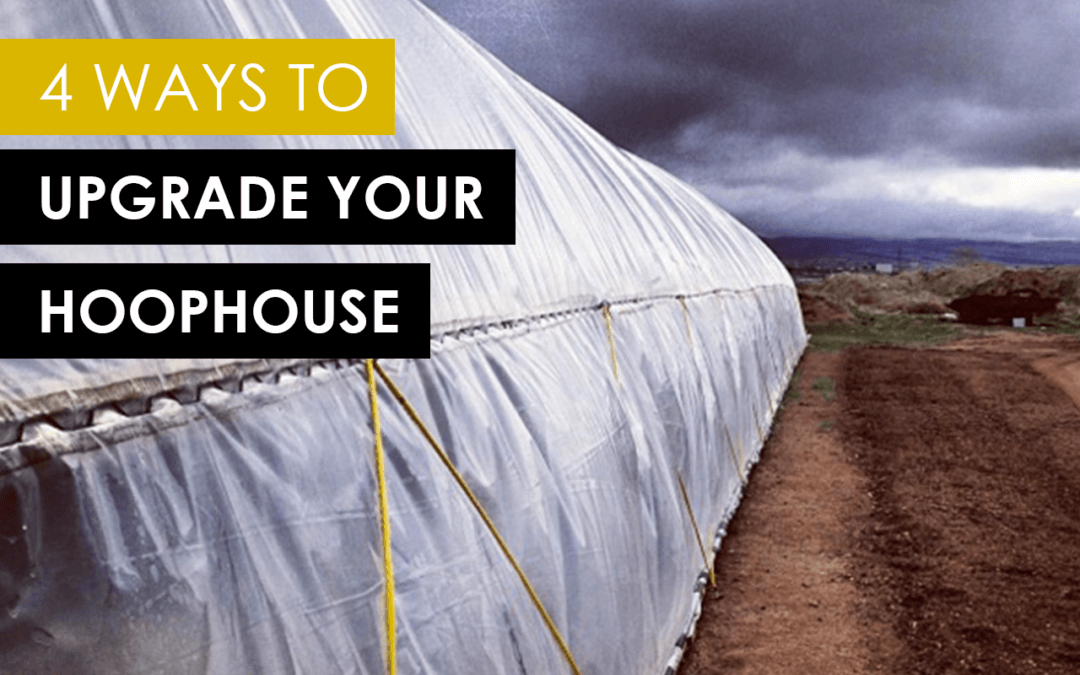If you’re growing in a greenhouse, you might be upgrading or expanding your operation this summer. Many farmers start with a simple greenhouse and add features over time. This can be a great option for farmers who want to start on a low budget and scale up, or who are testing out the method before investing in a high-tech greenhouse.
Down at Colorado Fresh Farms in Fort Collins, Farmer Haydn Christensen has some upgrades in the works for his own hoop houses. For the past few years, Haydn’s hoop houses have been seasonal operations with passive heating and cooling. He was using a bag system with coco coir to grow cherry tomatoes.
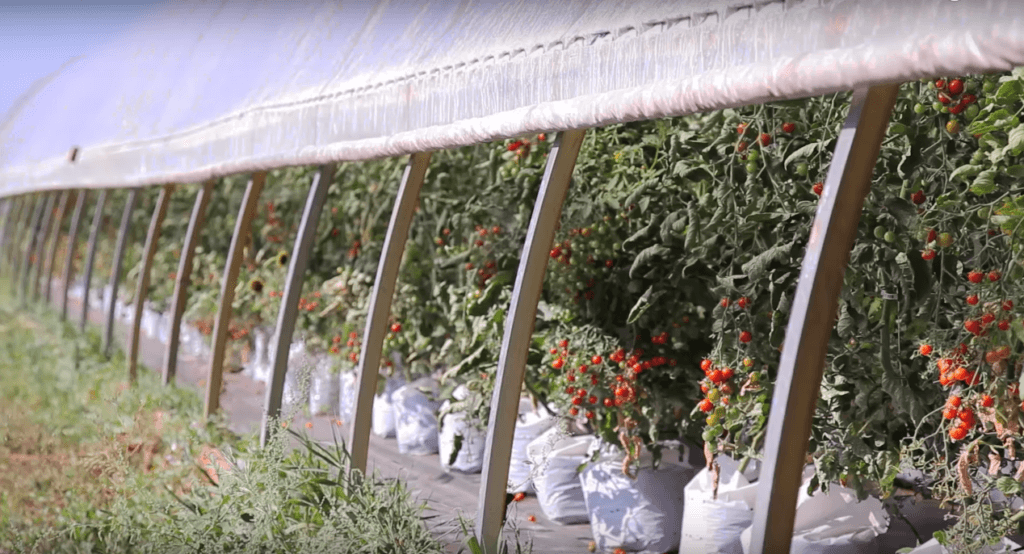
This spring, Haydn is extending the season with a few upgrades, including propane for better heating, larger fans for active cooling, a double layer of polyethylene for the hoop house wall, and a switch to slabs for his tomato plants.
We got a chance to look at these upgrades. In this video, Haydn takes us through these upgrades to describe the advantages and process for each one.
1) Propane heating
Larger heaters allow Haydn to have more consistent heating earlier and later in the season, especially at night. Altogether, Haydn has added almost two months onto his normal Colorado growing season.
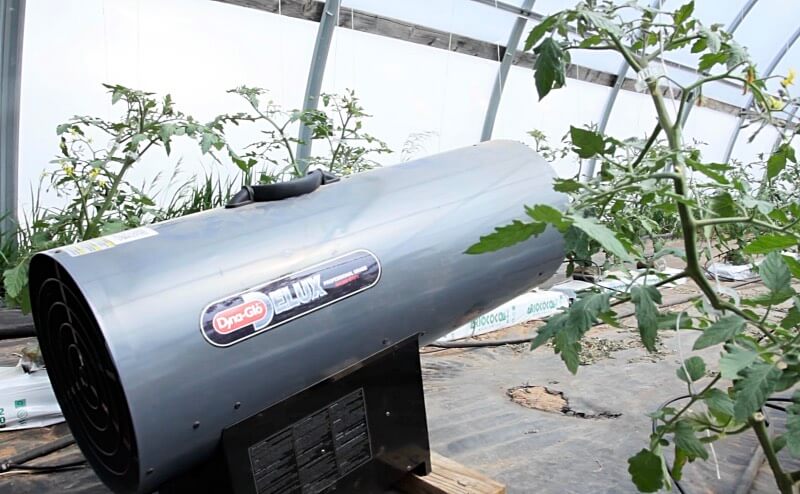
2) Double layer poly
Previously, Haydn was using a single layer of plastic on his hoop houses. This allowed him to roll up the sidewall for cooling, but required more monitoring and gave Haydn less control.
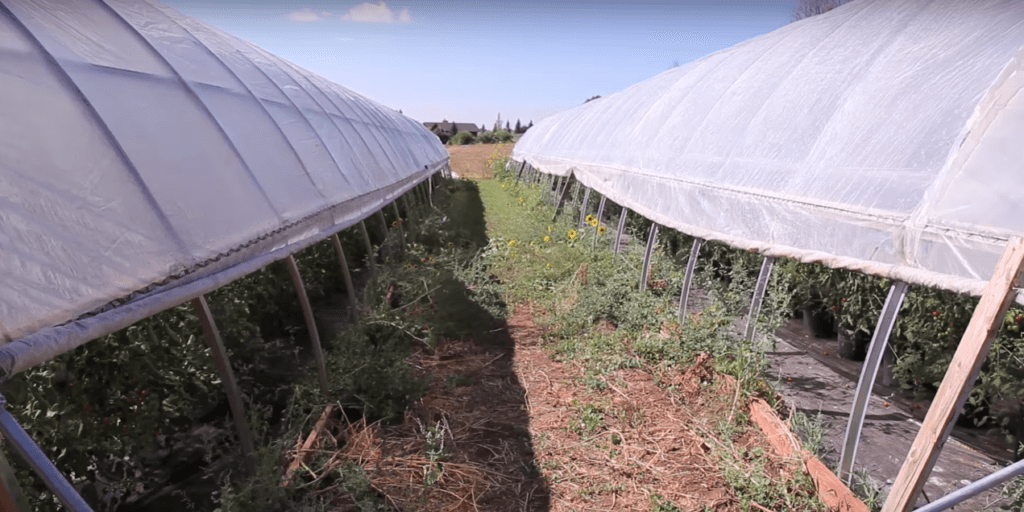
New fans allow Haydn to use a double layer instead. With the double layer wall, the insulation on the greenhouse is far superior. This decreases heating costs later on and keeps temperatures from fluctuating as much.
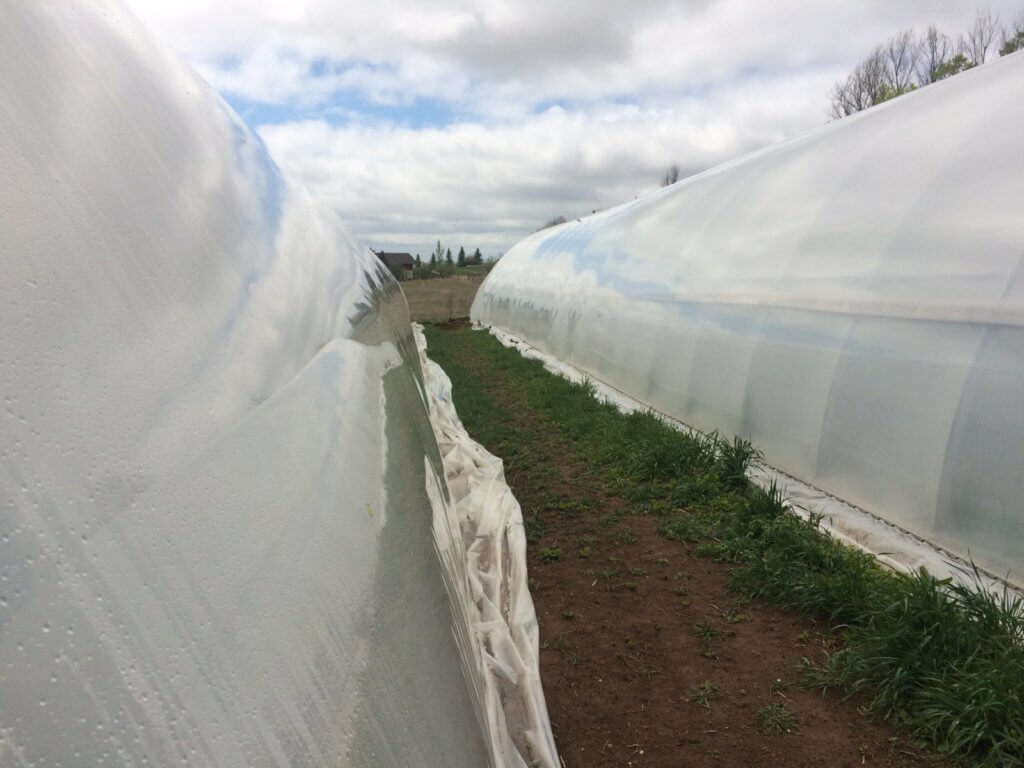
The new walls are inflated with several inches of air, which makes the walls firmer and insulates the greenhouse. A well-insulated wall will have “bounce” to it.
The structural integrity of the hoop house is also better since the inflated walls are more firm. This is a benefit in Fort Collins, where it can get quite windy.
3) Well-sized fans
Haydn bought better-sized fans for both hoop houses. At 21,000 CFMs per fan, they can replace the entire volume of air in the greenhouse in less than a minute.
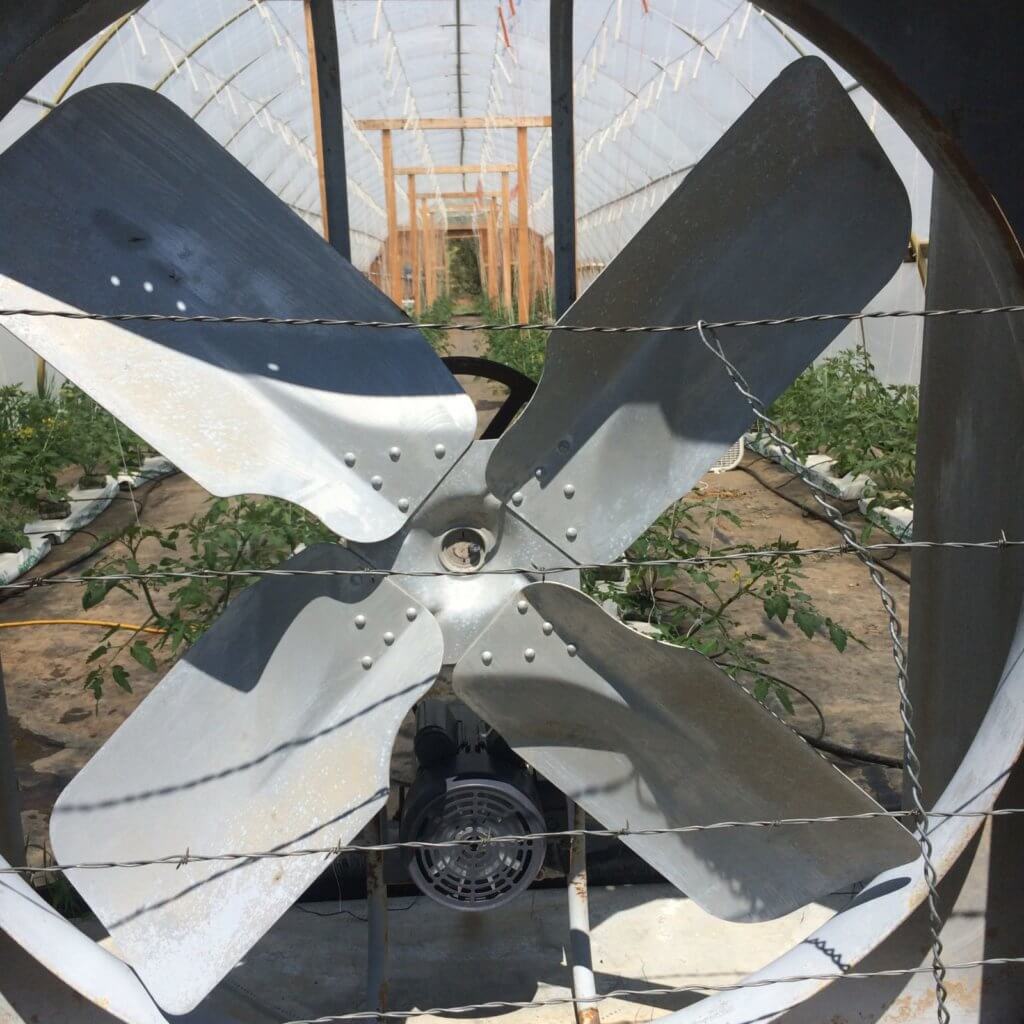
While roll-up sides are inexpensive and easy, they require much more monitoring and don’t give the farmer as much control over temperature. Haydn can connect the fans to a thermostat so he can keep the temperature range within a few degrees.
4) Coco coir slabs instead of individual bags
Last year, Haydn was using an easy coco coir bag/pot system to grow tomatoes. This year, he’s optimizing for labor even more by cutting out a transplanting step. Now he sets the seedling plugs into blocks, then sets the blocks onto slabs when they’re ready for the greenhouse. This saves him time in transplanting and disturbs the plant less.
